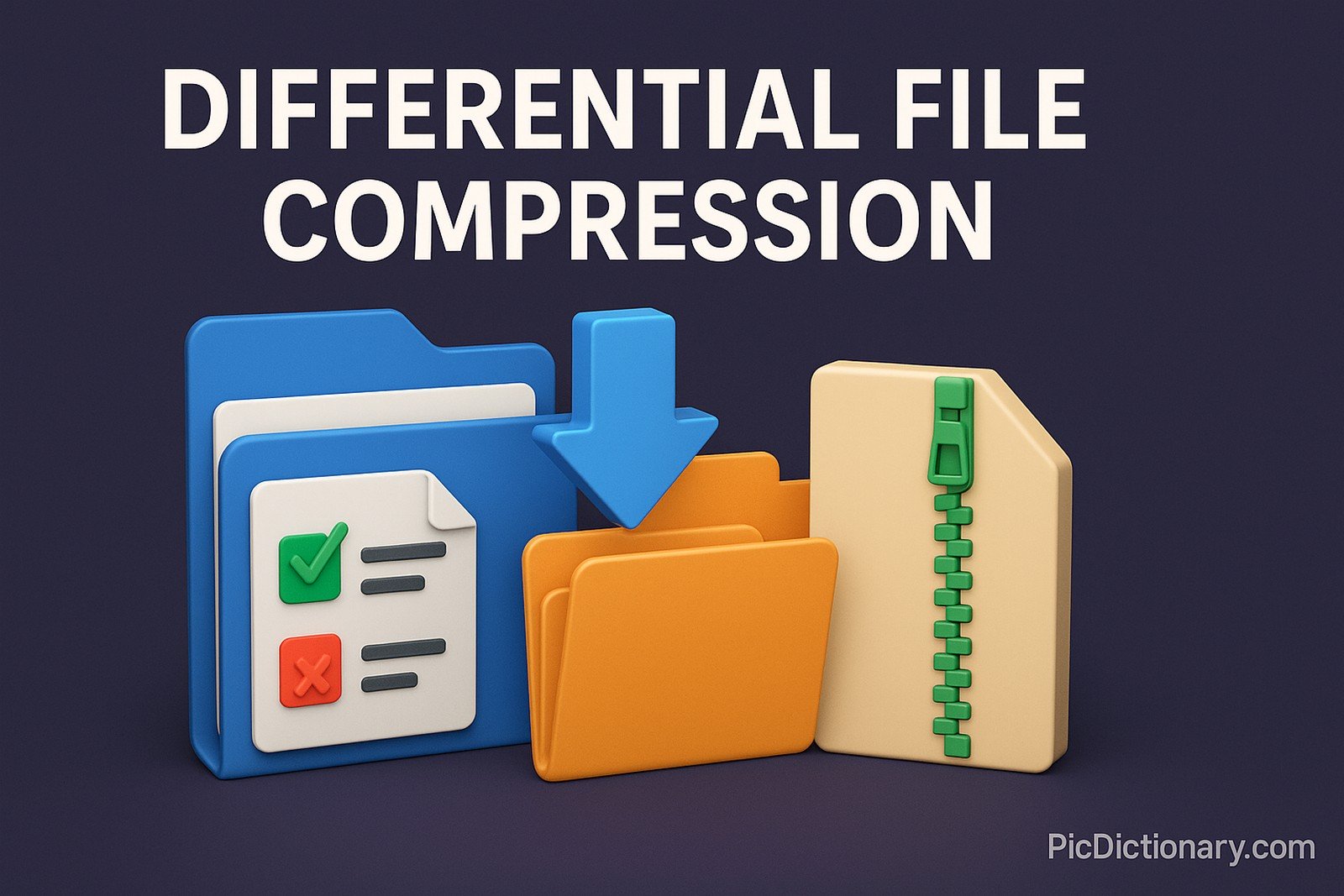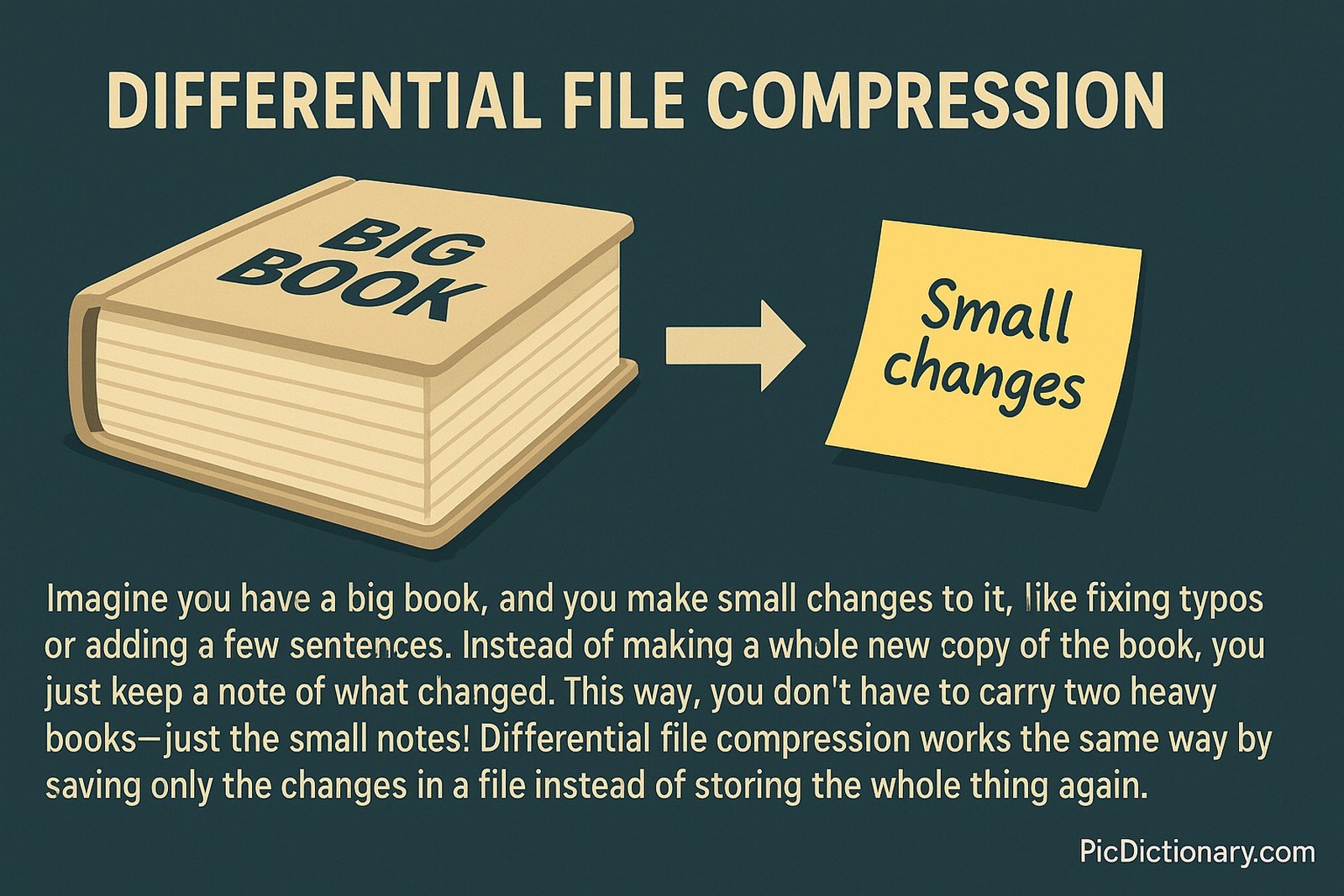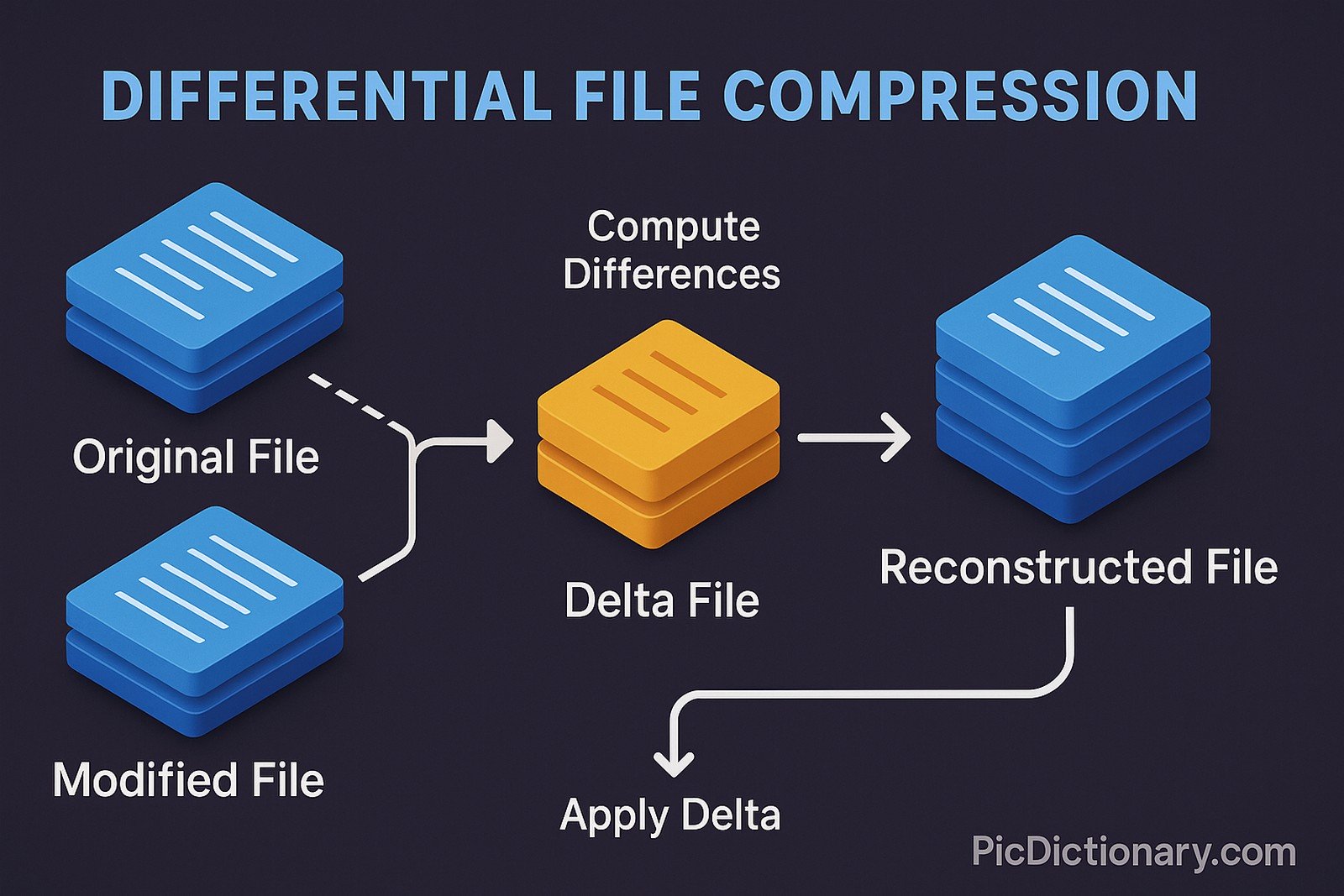Differential File Compression

Quick Navigation:
- Differential File Compression Definition
- Differential File Compression Explained Easy
- Differential File Compression Origin
- Differential File Compression Etymology
- Differential File Compression Usage Trends
- Differential File Compression Usage
- Differential File Compression Examples in Context
- Differential File Compression FAQ
- Differential File Compression Related Words
Differential File Compression Definition
Differential file compression is a technique that optimizes storage and bandwidth usage by storing only the differences (or deltas) between file versions rather than saving entire copies. This method is commonly used in software updates, backup solutions, and version control systems, reducing redundant data and improving efficiency. Algorithms such as Rsync and Xdelta detect changes between file versions and generate compact delta files, enabling efficient data synchronization and transfer.
Differential File Compression Explained Easy
Imagine you have a big book, and you make small changes to it, like fixing typos or adding a few sentences. Instead of making a whole new copy of the book, you just keep a note of what changed. This way, you don’t have to carry two heavy books—just the small notes! Differential file compression works the same way by saving only the changes in a file instead of storing the whole thing again.
Differential File Compression Origin
The concept of differential file compression evolved from early file comparison techniques used in UNIX systems. The need for efficient data storage and transmission in limited-bandwidth environments led to the development of delta encoding methods in the 1980s. Over time, advancements in computing and networking made differential file compression a fundamental approach in modern software distribution and cloud storage systems.
Differential File Compression Etymology
The term "differential" comes from the word “difference,” indicating that this method focuses on storing only the changed parts of a file. “Compression” refers to the reduction in data size to optimize storage and transfer.
Differential File Compression Usage Trends
Differential file compression is widely used in modern computing due to the increasing need for data efficiency. Cloud backup services use it to store incremental changes instead of full backups, saving storage space. Software update mechanisms, including Windows and Linux package managers, rely on differential compression to minimize download sizes. Additionally, developers use it in version control systems like Git to track changes in source code efficiently.
Differential File Compression Usage
- Formal/Technical Tagging:
- Data Compression
- Incremental Backup
- Delta Encoding - Typical Collocations:
- "differential file compression algorithm"
- "delta encoding technique"
- "efficient software update"
- "incremental backup strategy"
Differential File Compression Examples in Context
- A cloud storage service uses differential file compression to store only the changes made to a document instead of saving the entire file again.
- Software updates for operating systems utilize differential compression to reduce download sizes by including only modified code sections.
- A version control system tracks code modifications using delta encoding, allowing developers to revert to previous changes efficiently.
Differential File Compression FAQ
- What is differential file compression?
It is a method of storing only the differences between file versions instead of saving complete copies. - How does differential file compression work?
It detects and saves only the modified portions of a file, reducing data redundancy. - What are common applications of differential file compression?
It is used in software updates, cloud backups, version control, and data synchronization. - What are some popular algorithms for differential file compression?
Rsync, Xdelta, and bsdiff are commonly used for this purpose. - How does it differ from full file compression?
Full file compression reduces overall file size, while differential compression focuses on storing changes between versions. - Why is differential file compression important in cloud storage?
It saves storage space and bandwidth by only storing incremental changes instead of entire file copies. - Can differential compression be used for real-time data synchronization?
Yes, applications like Rsync enable efficient real-time file synchronization over networks. - What industries benefit the most from differential file compression?
Software development, cloud computing, and backup solutions heavily rely on it. - Does differential file compression affect file integrity?
No, as long as the delta files are correctly applied, the original file can be fully reconstructed. - Is differential file compression suitable for multimedia files?
It is primarily used for text and code files, but some specialized techniques apply to multimedia compression.

Differential File Compression Related Words
- Categories/Topics:
- Data Optimization
- File Versioning
- Network Efficiency
Did you know?
Differential file compression played a crucial role in the development of cloud-based collaboration tools. Services like Google Docs and Microsoft OneDrive use similar techniques to save changes in real time, allowing multiple users to edit a document simultaneously while minimizing data transfer.
PicDictionary.com is an online dictionary in pictures. If you have questions or suggestions, please reach out to us on WhatsApp or Twitter.Authors | Arjun Vishnu | @ArjunAndVishnu

I am Vishnu. I like AI, Linux, Single Board Computers, and Cloud Computing. I create the web & video content, and I also write for popular websites.
My younger brother, Arjun handles image & video editing. Together, we run a YouTube Channel that's focused on reviewing gadgets and explaining technology.



Comments powered by CComment